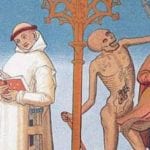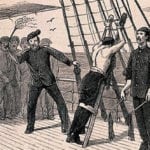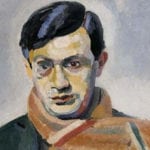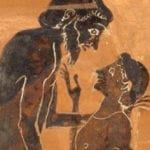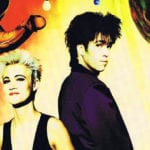 Weird Stuff
Weird Stuff  Weird Stuff
Weird Stuff  Our World
Our World 10 Ways Your Christmas Tree Is More Lit Than You Think
 Movies and TV
Movies and TV The 10 Coolest Stars to Set Sail on The Love Boat
 History
History 10 Things You Didn’t Know About the American National Anthem
 Technology
Technology Top 10 Everyday Tech Buzzwords That Hide a Darker Past
 Humans
Humans 10 Everyday Human Behaviors That Are Actually Survival Instincts
 Animals
Animals 10 Animals That Humiliated and Harmed Historical Leaders
 History
History 10 Most Influential Protests in Modern History
 Creepy
Creepy 10 More Representations of Death from Myth, Legend, and Folktale
 Technology
Technology 10 Scientific Breakthroughs of 2025 That’ll Change Everything
 Weird Stuff
Weird Stuff Ten Bizarre Facts About The Doge Meme
 Our World
Our World 10 Ways Your Christmas Tree Is More Lit Than You Think
 Movies and TV
Movies and TV The 10 Coolest Stars to Set Sail on The Love Boat
Who's Behind Listverse?

Jamie Frater
Head Editor
Jamie founded Listverse due to an insatiable desire to share fascinating, obscure, and bizarre facts. He has been a guest speaker on numerous national radio and television stations and is a five time published author.
More About Us History
History 10 Things You Didn’t Know About the American National Anthem
 Technology
Technology Top 10 Everyday Tech Buzzwords That Hide a Darker Past
 Humans
Humans 10 Everyday Human Behaviors That Are Actually Survival Instincts
 Animals
Animals 10 Animals That Humiliated and Harmed Historical Leaders
 History
History 10 Most Influential Protests in Modern History
 Creepy
Creepy 10 More Representations of Death from Myth, Legend, and Folktale
 Technology
Technology 10 Scientific Breakthroughs of 2025 That’ll Change Everything
Top 10 Milestones Of The Age Of Discovery
Few things furthered the steady march of history as substantially and exponentially as the Age of Discovery. From the early 1400s through the late 17th Century, Europeans powers took to the seas in search of new land, new riches and new ways to get to far-flung destinations. From the Caribbean to the Americas to Africa and beyond, the world would be radically reshaped for both better and worse.
Here are ten momentous occasions from that adventurous age, in chronological order.
Top 10 Triumphs Of Western Civilization
10 1419: Prince Henry the Navigator and the Science of Seafaring
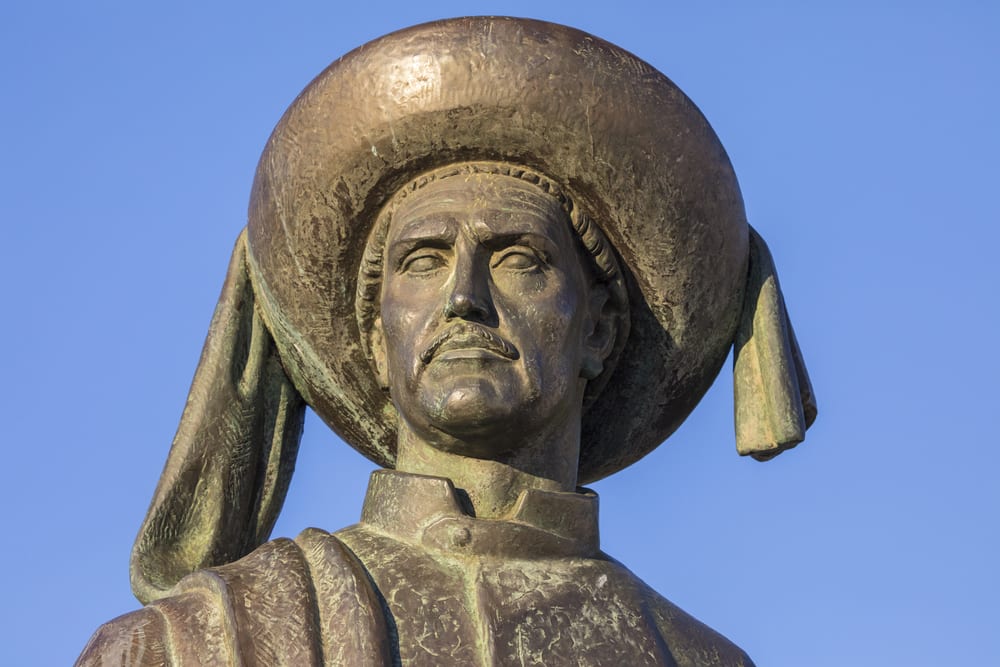
The man typically credited with kickstarting the Age of Discovery is Infante Dom Henrique of Portugal, Duke of Viseu, better known as Henry the Navigator. Born in 1394, Henry was the fourth child of Portuguese King John I, who reigned until 1433. Fascinated with exploration and blessed with the ample resources of a major European power, Henry played a pivotal role in the development of Portuguese maritime endeavors, including charting new territory and forging new trade routes and partners.
Unsurprisingly given Portugal’s proximity to the “Dark Continent,” Henry was particularly intrigued by Western Africa and, among other excursions, in 1415 he encouraged his father to conquer the Muslim port of Ceuta[1] in modern-day Morocco, directly across the Strait of Gibraltar from Portugal. In the late 16th Century, Ceuta passed to Spanish hands where it remained until 1995, when Spain granted it autonomy.
But Henry’s most impactful contribution was made not in foreign lands but right at home. In modern-day Sagres on Portugal’s southwestern coast, in 1418, Henry founded a navigation school[2] where he gathered the era’s most prominent mapmakers, instrument makers, shipbuilders, scientists and sea captains. The cross-discipline meeting of the minds helped attendees perfect their various trades, helping each stand on the others’ shoulders. The school’s site still exists today as a museum in Portugal’s popular Algarve region.
9 1497: Vasco da Gama Connects Europe and India
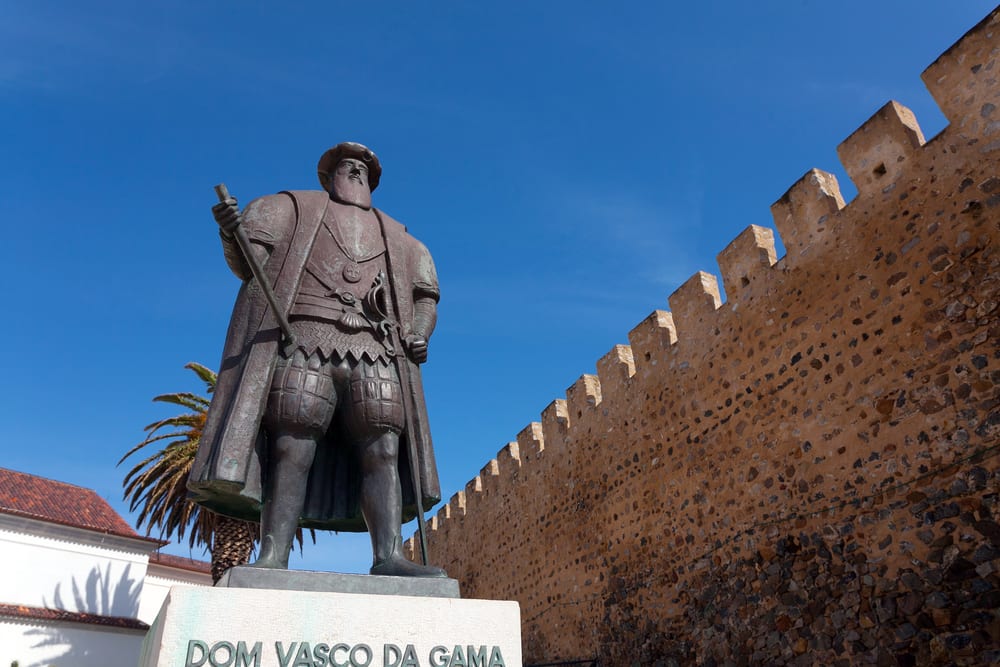
While Henry the Navigator’s encouraged exploration of Africa certainly intrigued European powers, Africa was also seen as a continent-sized obstacle to a more enviable prize: a convenient seafaring trade route to India’s ports.
Around 1488, Portuguese explorer Bartolomeu Dias[3] became the first to reach the Cape of Good Hope, Africa’s southern tip. Less than a decade later his countryman, Vasco da Gama,[4] sought to capitalize on this newfound knowledge by sailing around the cape and on to India – however far that may be.
The voyage was quite an ordeal. Leaving Lisbon on July 8, 1497 with a four-ship fleet, da Gama reached the Cape Verde Islands by month’s end, then took a circuitous route around the Gulf of Guinea’s worrisome currents. The fleet didn’t reach modern-day South Africa until early November, and didn’t round the cape until later that month. By January, stalled near modern-day Mozambique, many of da Gama’s crew were sick with scurvy.
In wasn’t until mid-April, by now in Kenya, that da Gama encountered a pilot who knew the route to Calicut, on India’s southwest coast. From there, a comparably trouble-free 23-day sprint across the Indian Ocean made instant heroes of the long-sputtering Portuguese seamen. Now that the route was known, subsequent voyages could be completed far more expeditiously.
Notably, on his second expedition to India, da Gama is rumored to have stalked and attacked an Arab ship near Calicut, looted its cargo and set it afire, killing up to 400 passengers including women and children. So much for diplomacy.
8 1498: Columbus (Finally) Makes It to the Mainland
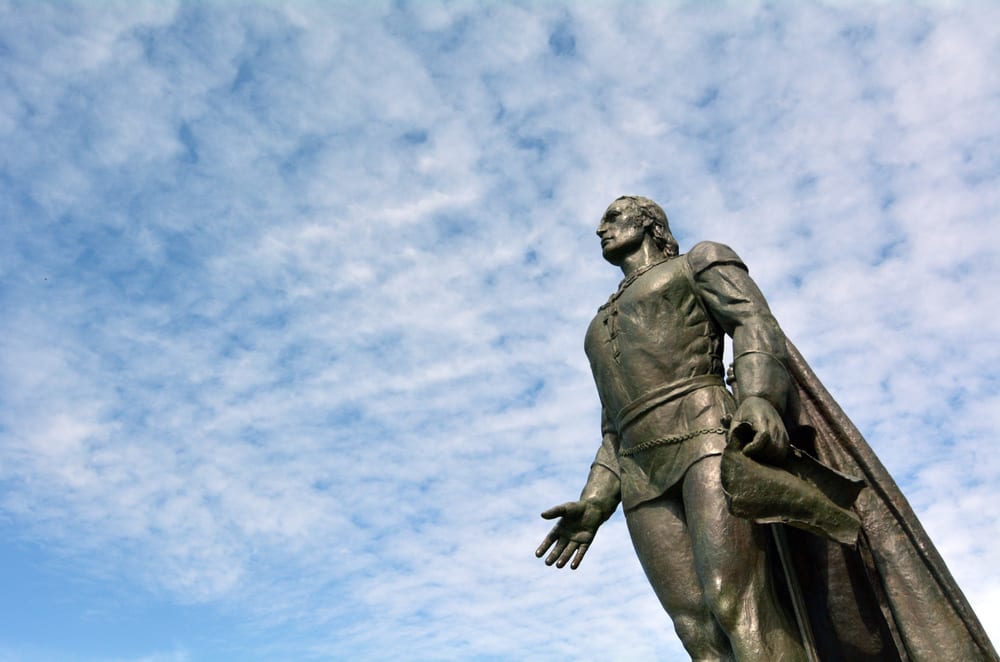
Everybody knows that Christopher Columbus bravely sailed west across the ocean and set foot in America. The year was 149-… 8?
Yes, 1498. Because Columbus didn’t set foot on mainland America – South America to be precise – until his third[5] of four intrepid voyages. In May 1498, Columbus left Spain with six ships, three filled with provisions for the fledgling colony tenuously established on Hispaniola (modern-day Haiti and Dominican Republic), and three hellbent on finding land south of previously charted islands.
He found it. This time, he made landfall on Trinidad, planting the Spanish flag on August 1. His next stop was the Paria Peninsula in modern-day Venezuela, where Columbus’ crew became the first Europeans to reach the American mainland[6] on August 5, 1498.
In terms of furthering the Age of Discovery, however, Columbus’ fourth and final voyage may have been his most significant. Exploring the Central American coasts of present-day Honduras, Costa Rica and Panama, in 1503 Columbus established a short-lived garrison near Panama’s Belén River, a fortification whose remnants can still be toured today.
Columbus went to such trouble because he’d heard rumors of a waterway leading to another ocean: the so-called Northwest Passage. Though it didn’t exist, the isthmus was narrow enough that, just a decade later…
7 1513: Balboa Discovers the Pacific Ocean
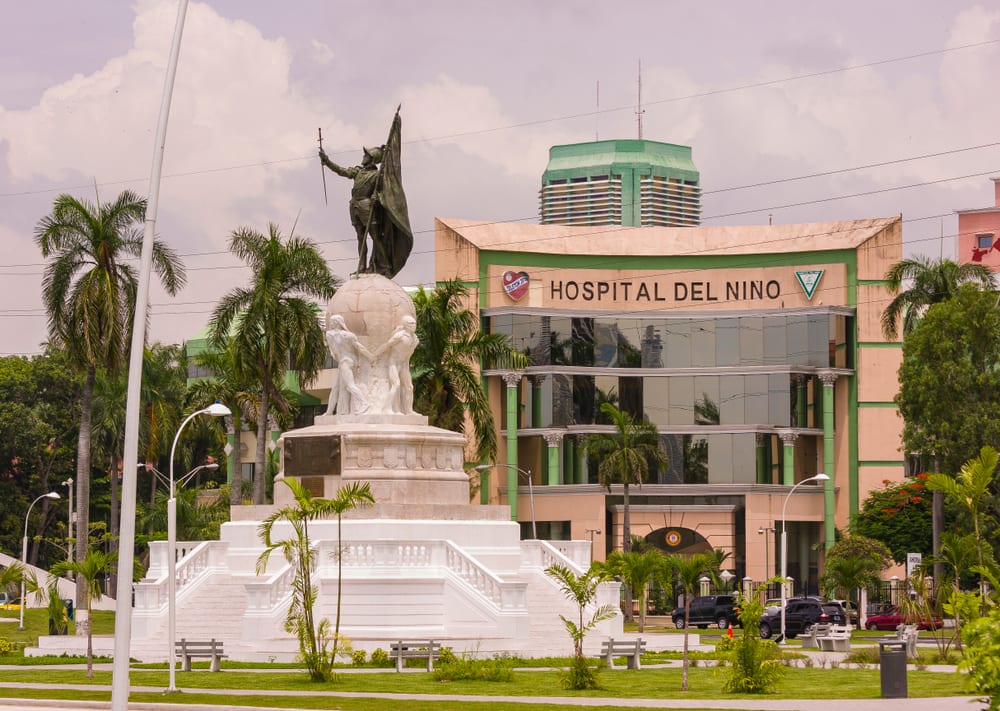
Following his final foray into the New World, Columbus returned to Europe with much to report, including rumors of a potential passage to open ocean via Panama. Soon, a party led by Vasco Núñez de Balboa[7] of Spain established the first stable settlement on the South American continent at Darién, Panama. And though Balboa’s primary goal was gold, he found something nearly as valuable.
Balboa had been in the New World for years, including an unsuccessful stint as a planter and pig farmer in Hispaniola. Through grit and guile – to escape debtors in Hispaniola, he stowed away in a barrel with his dog – Balboa eventually found himself leading expeditions to find gold for the Spanish crown.
Balboa first heard of the present-day Pacific Ocean in 1513, as an aside to a heated discussion about (what else) gold. A native, angered by the Spaniards’ single-minded greed, disgustedly exclaimed: “If you are so hungry for gold that you leave your lands to cause strife in those of others, I shall show where you can quell this hunger.” He told Balboa of a place where people drank from goblets of gold, but warned a thousand men would be required to conquer tribes living inland and along the coast of “the other sea.”
Despite a manpower shortage, Balboa departed on September 1, 1513. On September 25, he reached a summit from which he saw the vast ocean. Balboa triumphantly waded into the water, raised his sword and claimed the new sea[8] and all adjoining lands for Spain. A bit presumptuous, no?
6 1513: Ponce de Leon Becomes Europe’s First #FloridaMan
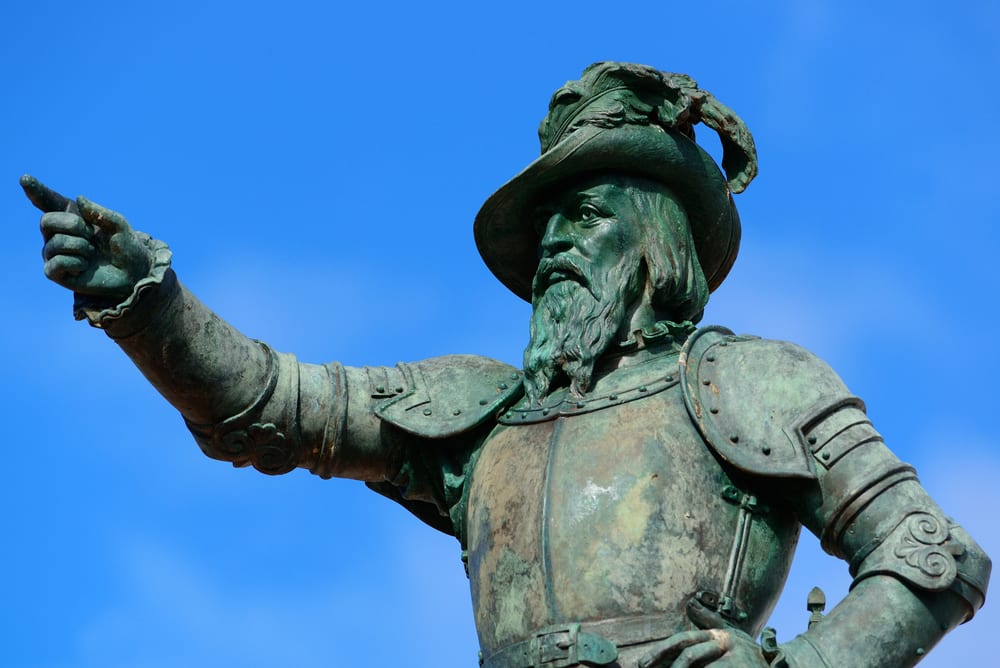
It’s odd that children in the United States are taught that Christopher Columbus discovered America, when Columbus never set foot anywhere near the present-day United States. The distinction of first European on US soil goes to Juan Ponce de Leon, who claimed modern-day Florida for Spain in 1513.
de Leon had already been in the New World quite some time before landing in Florida. He started as a military official in Hispaniola and, in 1509, was appointed governor of Puerto Rico; Ponce, a major city on Puerto Rico’s southern coast, still bears his name.
Of all people, it was a dispute with Christopher Columbus’ son,[9] Diego, that led to de Leon packing his bags for sunny Florida. On April 2, 1513, de Leon came ashore near St. Augustine, dubbing the peninsula “La Florida” due to the approaching Easter-season celebration, called Pascua Florida (“feast of flowers”) in Spanish. A preview of the utter nonsense[10] Florida would host half a millennia later, the explorer was searching for the fabled “Fountain of Youth,” a water source said to bring eternal youth.
He didn’t find it. But he did pave the way for a successful Spanish settlement starting in 1565, though this was more than 40 years after de Leon’s death in 1521. Today, St. Augustine is considered the oldest continuous settlement in the United States.[11] Notably, intermarriage with Native American tribes (and even African slaves) was prevalent early in St. Augustine’s history, an uncommon intermingling during the early Age of Discovery.
Top 10 Gloriously Eccentric Tales Of European Nobility
5 1519: The New World’s Most Impactful Import
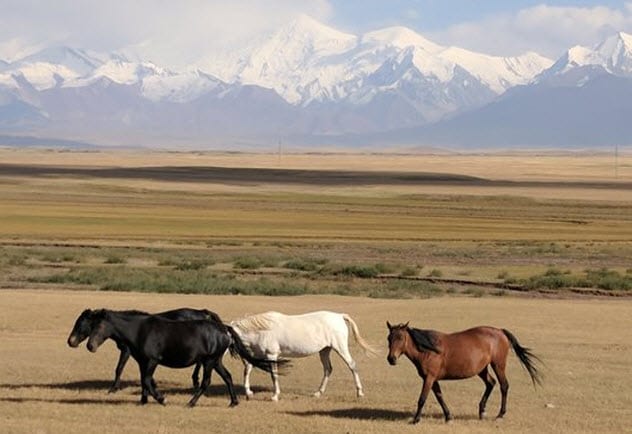
Spanish conquistador Hernán Cortés slaughtered thousands of Aztecs, toppled the empire’s capital city of Tenochtitlán, renamed it Mexico City – today the most populous city in the Western Hemisphere – and enriched his country’s coffers with thousands of pounds of gold, silver and jewels…[12]
… none of which was his most meaningful contribution to history.
Wars happen. Empires rise and fall, and precious metals change hands in bloodshed. But very rarely in human history is something introduced that radically transforms societies across two continents.
That something was the horse.[13] When Cortes landed in present-day Veracruz, Mexico with 16 steeds, he introduced horses to the New World’s mainland (Columbus had brought them to the Caribbean islands). Subsequent explorers brought ever-growing numbers of horses, which were instrumental in subjugating both the Aztec and Incan Empires.
Soon, the horse would radically change Native American culture.[14] Vast distances were suddenly traversable, bringing once-segregated tribes into contact for intermarriage, trade, and war. Animals once nearly impossible to hunt on foot – most notably, the thunderous herds of buffalo roaming the North American plains – became easy pickings. The newfound mobility made Native American societies less insular, more multicultural and, per master cavalrymen like the Comanches, certainly more bellicose.[15]
4 1522: Magellan Comes Full Circle
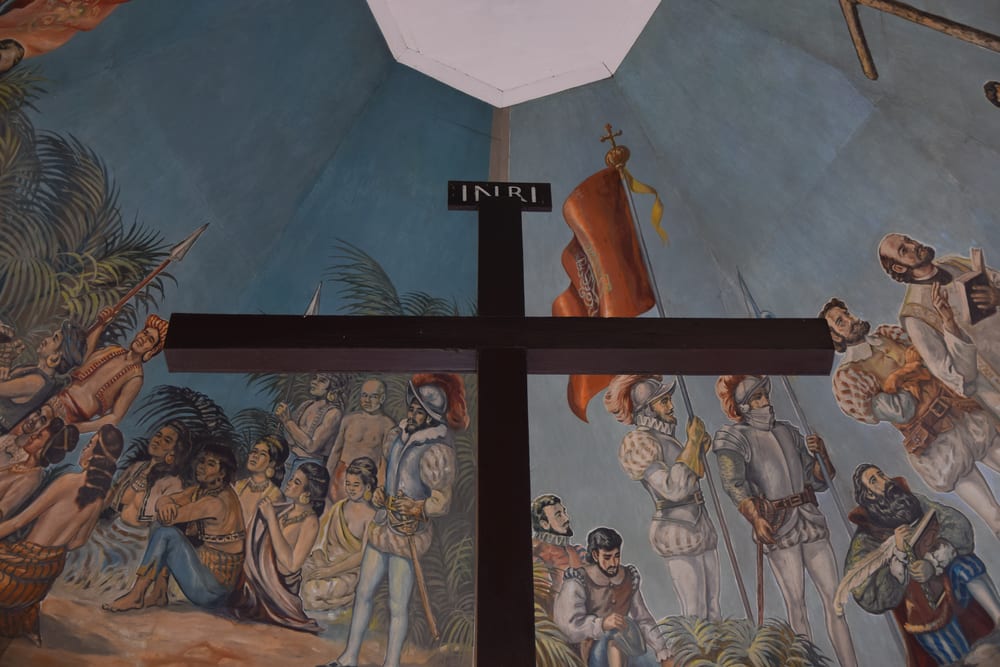
Well, almost. While an expedition led by Ferdinand Magellan did indeed become the first to circumnavigate the globe, its fearless leader died before the journey’s completion. But not before he named an ocean and proved a point or two.
In 1519, Ferdinand Magellan[16] set sail from Spain with five ships, with the goal of finding a faster commerce route to the East Indies. No such convenient pathway existed, of course, but what Magellan did discover – after sailing hundreds of miles south down the east coast of modern-day South America – was a narrow waterway near the continent’s southern tip that connected two oceans.
While Balboa had been the first to see (and presumptuously claim) the body of water, Magellan gave what Balboa dubbed the South Sea a better, longer-lasting moniker. Emerging from what is now known as the Strait of Magellan, the explorer marveled at the ocean’s comparable calmness, giving the Pacific – or “peaceful” – Ocean its name.
Magellan never made it all the way back to Spain; in April of 1521 he was killed in a fight with natives in the Philippines. In fact, only one of the original five vessels made it back to Spain the following year. However, the expedition proved two things. First, Earth’s already widely-suspected roundness[17] was confirmed. Second, and just as importantly, the world was BIG. Like, really big – too big to sail west to get to far-flung established trading posts like the East Indies… at least via modern-day Central and South America.
3 1526: A Dark Year in an Enlightened Era
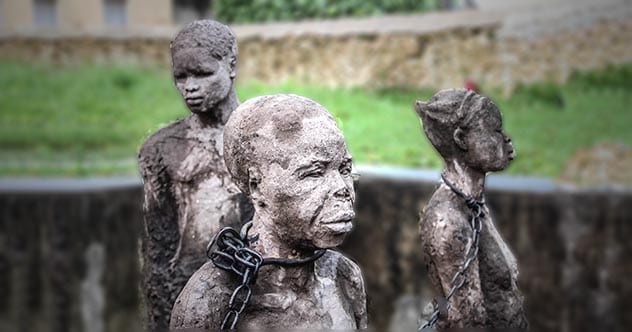
While brightened by a steady succession of progress – new territory charted and mapped, new cultures encountered, new trade routes developed – the Age of Discovery has a decidedly dark side. The greed-driven bloody conquests of Native American empires such as the Aztecs, Incans and Mayans are strong examples.
But perhaps the greatest injustice inaugurated by the Age of Discovery was the African slave trade – the wholesale kidnapping and carting of human cargo doomed to toil until death in foreign lands.
The first transatlantic voyage delivering African slaves to the New World was completed in 1526, when Portugal carried a boatload of chained chattel to Brazil. They would become the first of an estimated 4.9 million Africans transported to Brazil over the ensuing three-plus centuries, more than any other country in the world (by comparison, “only” about 400,000[18] were shipped directly to North America).
Often overlooked is that the role of New World slaves went well past agricultural. If they survived the squalid below-deck conditions during the months-long crossing, kidnapped Africans were put to work in wide-ranging ways; in addition to planting and harvesting coffee, tobacco, cocoa, sugar, and cotton, forced labor was used to mine precious metals, cut timber for ships, construct infrastructure (including the wall that gave New York City’s Wall Street its name), and domestic servants.
2 1608: Vive la (New) France: Samuel de Champlain Founds Quebec City
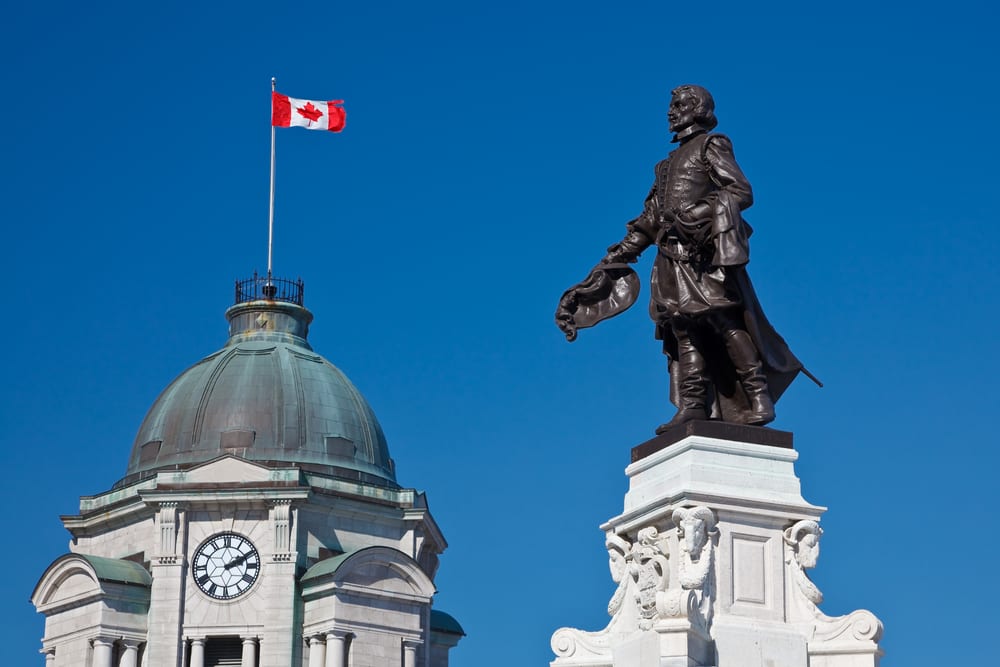
A year before our next explorer, Henry Hudson, claimed New Amsterdam for his Dutch financiers – a short-lived distinction, as the British would siege, seize and promptly rename the colony in 1664 – Samuel de Champlain was up north making sure that French, unlike Dutch, would be widely spoken in the New World for centuries to come.
de Champlain’s seafaring life was impressive well before his marquee moment. From 1604-07, he took part in the exploration and settlement of Port-Royal in present-day Nova Scotia – only the second permanent European settlement in North America (Florida was first). The locale became part of the French colony of Acadia. Notably, when British forces expelled huge swaths of Acadians from the area in the 1750s,[19] many fled to the fledgling city of New Orleans in French-owned Louisiana. Their modern ancestors are – you guessed it – Cajuns.
But then de Champlain outdid himself: sailing up the St. Lawrence River, he staked out and claimed the location soon to become Quebec City, which to this day remains one of the most charmingly Europeanesque cities in North America, capped with the castle-on-a-hilltop Chateau Frontenac.[20] The French’s influence over Quebec would steadily grow, and in 1642 a missionary colony was founded that grew up to become the province’s most populous city, Montreal.
1 1609: Henry Hudson’s Happy Accident
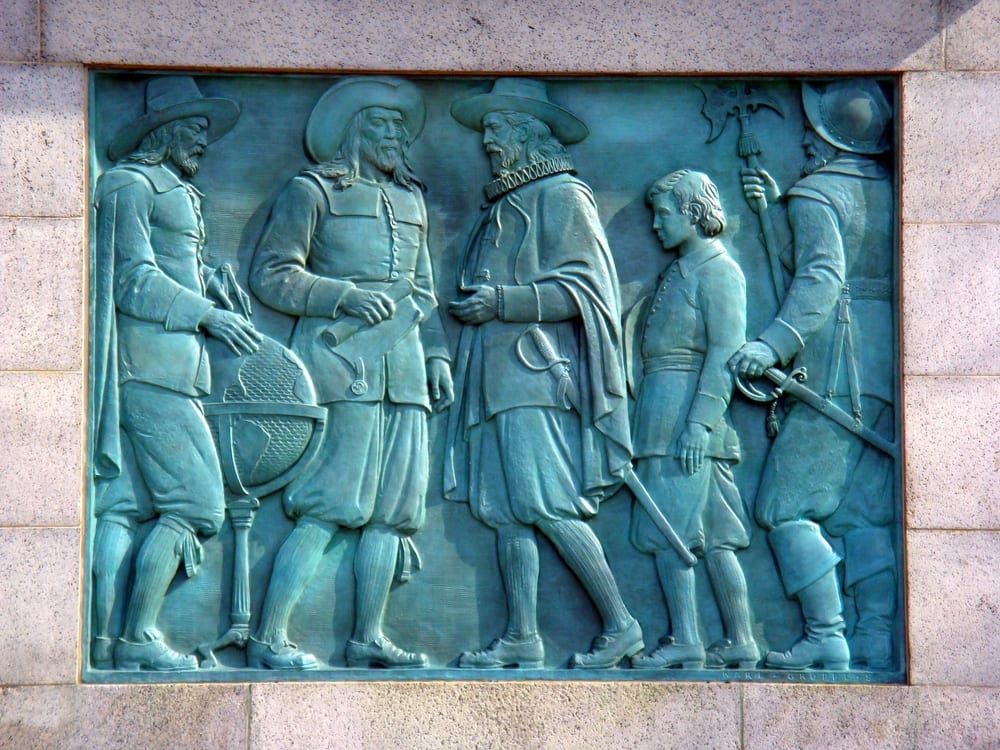
Throughout the 1500s and early 1600s, the search for an elusive seafaring shortcut through the New World and on to Asia went on. Sailing for his native England in 1607 and 1608, explorer Henry Hudson took two cracks at finding a northeasterly route through the Arctic Circle. All ice, no dice.
In 1609 Hudson, this time funded by the Dutch East India Company, took a slightly more southerly route, sailing down from present-day Nova Scotia to the Chesapeake Bay. With no east-west waterway in sight, he decided to check out New York,[21] whose harbor Italian navigator Giovanni da Verrazzano – namesake of the recently spell-checked bridge[22] connecting Brooklyn and Staten Island – had deemed especially inviting back in 1524.
There he found a wide river that bent inland. Could it be the Northwest Passage? Hudson’s ship, the Half Moon, pushed on. He anchored near the West 40s in Midtown, Manhattan. He stopped in the Bronx, then Westchester, and kept going until he reached modern-day Albany.
He hadn’t, of course, found the Northwest Passage. But what he’d found was, per Hudson, “as beautiful a land as one can hope to tread upon”.[23] He claimed the region, including the colony soon dubbed New Amsterdam, for the Dutch. Today the valley, the river and an adjacent perpetually congested highway proudly bear Hudson’s name.
Top 10 Things Your Ancestors Did Better Than You


